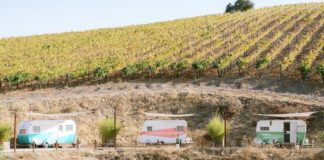
Although people have been harvesting rainwater for centuries, it is only relatively recently that it has become a norm in many parts of the world.
Primarily used for irrigation and toilet flushing, if correctly treated it may be used for potable applications as well. A life-saver in areas plagued by drought, harvesting rainwater is surprisingly easy and has increased in popularity in the U.S., a country officially identified as facing “imminent water shortages.” In fact, in a report on the challenges of expected water shortages in the U.S., published by the U.S. Government Accountability Office, it was reported that 36 states would suffer water shortages before 2023.
The reality is that most of the water in the U.S. and Canada comes from freshwater supplies of ground and surface water that is treated to make it potable in terms of the Safe Water Drinking Act. But freshwater isn’t an unlimited resource, which is why it is so important to conserve water from all sources.
Strangely perhaps, until relatively recently it was illegal to collect rainwater in some U.S. states, including California and Colorado. The reason was that if rainwater was harvested, it wouldn’t reach the rivers and would, as a result, decrease the allotted water rights of those living downstream.
However, the Federal Government doesn’t restrict rainwater harvesting and there are tax incentives in many areas that encourage both businesses and homeowners to invest in rainwater harvesting systems.
As the U.S. Environmental Protection Agency (EPA) points out, there are varied benefits of harvesting rainwater other than collecting it and storing it as mentioned above. Because it radically decreases runoff and can be used, a rainwater harvesting system will:
- Reduce utility bill charges.
- Decrease erosion that is so often caused by excessive rainwater runoff.
- Minimize the distribution of harmful contaminants including fertilizers, pesticides, and sediments that are inadvertently that may be carried in the fast-moving runoff.
- Augment drinking water supplies for animals.
- Be utilized in drinking water systems that treat water to make it potable.


Codes & Standards for Rainwater Harvesting Systems
Plumbing codes do not generally incorporate guidelines for rainwater harvesting systems, although the Uniform Plumbing Code, developed as an American National Standard, does define “harvested rainwater,” along with reclaimed water and gray water, all of which are considered under a general heading, Water for Reuse.
Harvested rainwater is defined as storm water that is conveyed from roofs of buildings and stored in tanks or cisterns. It is then filtered and disinfected for non-potable uses including toilet flushing and landscape irrigation and sometimes treated for potable uses.
There is, though, a standard developed by the CSA Group, a Canadian-based standards organization, and published by the International Code Council (ICC) that is intended for use in both the U.S. and Canada. Titled CSA B805-18/ICC 805-2018 – Rainwater harvesting systems, it has been approved by both the American National Standards Institute (ANSI) and the Standards Council of Canada (SCC). It covers roof-surface rainwater and storm water used for non-potable and potable applications at source, including those already mentioned as well as fire protection.
In the context of the code, which links designs for harvesting rainwater with all the relevant elements of buildings, storm management, roofing, plumbing, and fire suppression, rainwater includes rain water in any form including roof-runoff, storm water, and snowmelt.
It specifically covers rainwater harvesting systems that are suitable for all residential applications, including single-family residences, multi-residential buildings, and a variety of non-residential applications. So whether you live in an apartment or a suburban house, you’ll find the guidelines you need.
It doesn’t cover rainwater harvesting systems or the collection of surface water for industrial and manufacturing processes. These and those developed for commercial agricultural processes need to be designed by an MEP engineering firm in Chicago, New York, Toronto, Calgary, or wherever the system is to be located.
How Rainwater Harvesting Systems Work
There are two basic types of conveyance systems used for rainwater harvesting:
- Wet conveyance systems that channel the water from a catchment area below the ground to a tank above the ground.
- Dry conveyance systems that direct the rainwater directly into the tank. This means that when it isn’t raining, there won’t be water in the system.


The design of the system will depend on where the catchment area is as well as the primary use of the system. For instance, if the water is to be used for irrigation, you need to decide whether it will require a high-pressure system or a low-pressure system for drip irrigation.
The most important elements of any rainwater harvesting system are:
- The catchment system, usually the roof, that directs the water to the conveyance system. The yield will depend largely on the material of the roof. Materials will also affect whether the water can potentially be potable or not. Metal sheds contaminants easily and has a high runoff coefficient producing the highest possible yield. Steeper roofs also shed contaminants more effectively.
- Conveyance systems, whether wet or dry, carry the water to the storage tank usually via gutters and downspouts. Ideally, conveyance systems should be sized to handle 100-year storm events! Gutters should be at least five inches wide and downspouts should be provided for every 100 feet of the catchment area that supplies the downspout.
- Filtration to prevent debris entering the conveyance system. Various types are available.
- Storage tanks that may be above or below the ground. Darker colors are better because they prevent light penetration which causes the growth of algae. Apart from the necessary inlets and outlets, tanks must be sealed. In some colder areas including New York, it is vital that above-ground gravity tanks are insulated and drained regularly. Underground tanks tend to handle freeze-thaw cycles better and can be used all year round. They are, though, more expensive and you will need a pump to convey the water into the tank.
A common question people ask Toronto, Calgary, London, New York, and Chicago engineers is how much rainwater they can or should aim to harvest. You can determine how much is available by referring to the National Weather Service maps that provide a key to annual precipitation levels in conjunction with the catchment area of the property. As an example, a 30 feet x 40 feet roof will produce a catchment area of 1,200 square feet. The last figure you need is the runoff coefficient, which is dependent on the type of materials the water will run off. A metal, asphalt shingle, or gravel roof will be between 0.95 and 0.75, while gravel on the ground will have a coefficient of only 0.70 to 0.25.
Once you have these figures, you multiply the average rainwater (inches) x 0.623 Constant x the catchment area (square feet) x the runoff coefficient to ascertain how many gallons of rainwater you can potentially harvest in any one year. New York State has produced a very helpful Rainwater Harvesting Guide that you can refer to for more detailed information.
Another common question relates to human health. Even though rainwater is clean when it falls from the sky, it picks up pollutants from the catchment area, which is why it needs to be filtered and/or treated if it is to be consumed. The CSA/ICC Standard mentioned earlier has guidelines.
 Michael Tobias is the founder and principal of New York Engineers, an Inc 5000 Fastest Growing Company in America. He leads a team of 30+ mechanical, electrical, plumbing, and fire protection engineers from the company headquarters in New York City, and has led over 1,000 projects in New York, New Jersey, Chicago, Pennsylvania, Connecticut, Florida, Maryland, and California, as well as Singapore and Malaysia.
Michael Tobias is the founder and principal of New York Engineers, an Inc 5000 Fastest Growing Company in America. He leads a team of 30+ mechanical, electrical, plumbing, and fire protection engineers from the company headquarters in New York City, and has led over 1,000 projects in New York, New Jersey, Chicago, Pennsylvania, Connecticut, Florida, Maryland, and California, as well as Singapore and Malaysia.





































